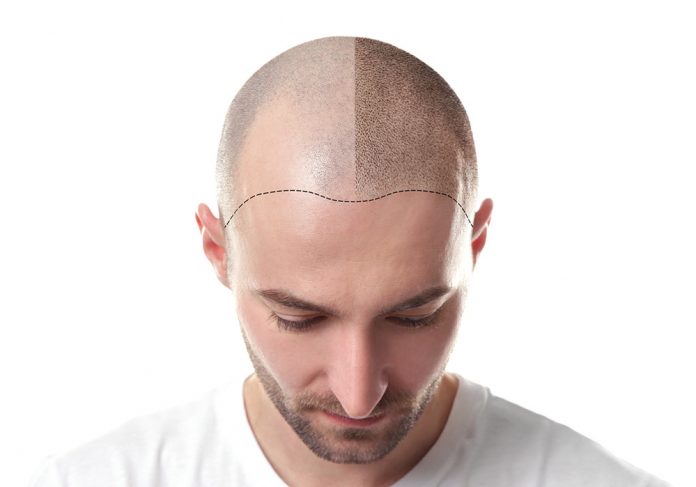Hair loss (alopecia) is a fairly common occurrence. While it’s more prevalent in older adults, anyone can experience it, including children.
It’s typical to lose between 50 and 100 hairs a day, according to the American Academy of Dermatology (AAD). With about 100,000 hairs on your head, that small loss isn’t noticeable. New hair normally replaces the lost hair, but this doesn’t always happen.
Hair loss can develop gradually over years or happen abruptly. Depending on the underlying cause, it may be temporary or permanent.
Trying to tell if you’re actually losing hair or just experiencing some normal shedding? Unsure if it’s time to see a doctor? Read on for more information about hair loss and how to manage it.
Hair loss symptoms
The main symptom of alopecia is losing more hair than usual, but this can be harder to identify than you might think.
The following symptoms can provide some clues:
Widening part. If you part your hair, you might start to notice your part getting wider, which can be a sign of thinning hair.
Receding hairline. Similarly, if you notice your hairline looking higher than usual, it may be a sign of thinning hair.
Loose hair. Check your brush or comb after using it. Is it collecting more hair than usual? If so, this may be a sign of hair loss.
Bald patches. These can range in size and can grow over time.
Clogged drains. You might find that your sink or shower drains are clogged with hair.
Pain or itching. If you have an underlying skin condition causing your hair loss, you might also feel pain or experience itching on your scalp.
What causes hair loss?
There are several types of hair loss, some are common and some are rarer, and each with different underlying causes.
Depending on the type of hair loss, it can be the result of genetics, internal causes, or external causes. Here’s a look at a few different types of hair loss:
Androgenic alopecia
Androgenic alopecia refers to hereditary hair loss, like male pattern baldness or female pattern baldness, and is also known as “pattern alopecia” because it can happen to both males and females.
It’s also the most common cause of hair loss, affecting up to 50% of Source.
Hair loss related to androgenic alopecia tends to happen gradually. While some people might experience hair loss as early as puberty, others might not notice symptoms until their middle ages.
Female pattern baldness often results in thinning all over the scalp and might look like widening or thinning around the part. It typically occurs after age 65 but, for some females, it can begin early in their lives.
Male pattern baldness typically involves progressive hair loss above the temples and thinning at the crown of the head, creating an “M” shape.
What causes hair loss?
There are several types of hair loss, some are common and some are rarer, and each with different underlying causes.
Depending on the type of hair loss, it can be the result of genetics, internal causes, or external causes. Here’s a look at a few different types of hair loss:
Androgenic alopecia
Androgenic alopecia refers to hereditary hair loss, like male pattern baldness or female pattern baldness, and is also known as “pattern alopecia” because it can happen to both males and females.
Hair loss related to androgenic alopecia tends to happen gradually. While some people might experience hair loss as early as puberty, others might not notice symptoms until their middle ages.
Female pattern baldness often results in thinning all over the scalp and might look like widening or thinning around the part. It typically occurs after age 65 but, for some females, it can begin early in their lives.
Male pattern baldness typically involves progressive hair loss above the temples and thinning at the crown of the head, creating an “M” shape.
Telogen effluvium is a type of sudden hair loss that results from emotional or physical shock, like a traumatic event, period of extreme stress, or a serious illness.
It can also happen because of hormonal changes, like those that happen in:
childbirth
postpartum
menopause
Polycystic Ovary Syndrome (PCOS)
Other potential causes of telogen effluvium include:
malnutrition including vitamin or mineral deficiency
certain endocrine disorders
starting or stopping hormonal birth control
post surgery as a result of the anesthesia
acute illnesses or severe infections like COVID-19
Several types of medications can also cause it, including:
anticonvulsants
oral retinoids
beta-blockers
thyroid medications
This type of hair loss typically resolves on its own once the underlying cause is addressed.
Tinea capitis
Tinea capitis, also called ringworm of the scalp, is a fungal infection that can affect the scalp and hair shaft. It causes small bald patches that are scaly and itchy. Over time, if not treated early, the size of the patch or patches will increase and fill with pus.
These patches, sometimes called a kerion, can scarring as well.
Other symptoms include:
brittle hair that breaks easily
scalp tenderness
scaly patches of skin that look grey or red
It’s treatable with antifungal medication.
Traction alopecia
Traction alopecia results from too much pressure and tension on the hair, often from wearing it in tight styles, like braids, ponytails, or buns




























